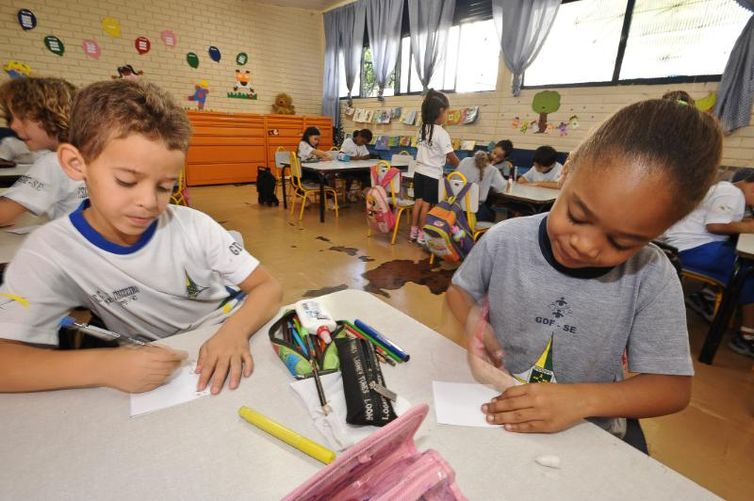Brazil spends approximately 6% of its gross domestic product (GDP) on education every year. This percentage is above the 5.5% average reported among the countries making up the Organization for Economic Cooperation and Development (OECD). Nonetheless, the country ranks among the last for school performance, despite certain successful cases at city and state level. The data can be found in a report entitled Aspectos Fiscais da Educação no Brasil, published today (Jul. 6) by the Finance Ministry.
The report reveals that the amount spent by Brazil surpasses those of countries like Argentina (5.3%), Colombia (4.7%), Chile (4.8%), Mexico (5.3%), and the US (5.4%). “Some 80% of countries, including several developed countries, spend a lower percentage of their GDP on education.”
In another comparison, the study says that the spending on education showed a real growth of 91% from 2008 to 2017—a yearly 7.4%—whereas revenues with the federal government rose 6.7% in real figures (inflation subtracted) or 0.7% per annum on average.
School performance
In the main international assessment on school performance, PISA (Programme for International Student Assessment), Brazil occupies one of the lowest positions. Of the 70 countries evaluated in 2015, Brazil stood at 63rd for Sciences, 59th for Reading, and 66th for Mathematics.
Brazil’s main issue, the report argues, does not lie in the amount spent, but rather in the need for improving policies on education. “Despite the strong social pressure for increasing spending on education, there is evidence that the low quality we see today does not stem from lack of funding. This does not hold true for Brazil alone. Literature on the topic has already established that policies exclusively based on expanding resources for education are usually inefficient,” the study says.
Successful cases
The study also highlights successful cases in Brazil, like the state of Ceará, in the Northeast, which received the fifth best Rate for Development in Basic Education (an indicator used countrywide for quality education known as Idep) for the first years of elementary education, despite receiving less funding than the average both in the Northeast and the country.
In 2017, Ceará invested $916 per student in basic education, whereas the other northeastern states spent some $968.27, “Nonetheless, Ceará earned a 5.7 Ideb, while other states averaged 4.4. Also worthy of mention is that, in 2005, Ceará’s performance reached a mere 2.8, which placed it at the 18th position among the 27 states,” the report reads.
“Ceará’s performance is even more meaningful if compared to the other end, the Federal District, which, despite investments 134% higher than the first one, had a 5.6 Ideb—slightly lower than that of Ceará,” the document adds.
Furthermore, the study says, Brazil’s best city Ideb in 2015 went to Sobral, also in Ceará, which reached an average of 8.8 grade for public schools, with spending adding up to $788, lower than the average of the state and considerably lower than the national average—$1,277.26.
